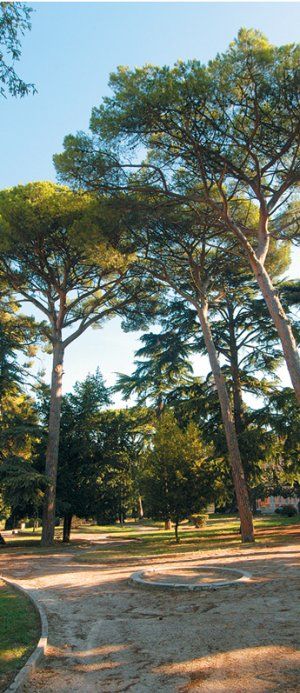Naval park
The first city park dates from 1863. It is situated between today’s Arsenalska, Rizzijeva and Besenghijeva streets. It covers an area of about 12,000 m2 and has a rectangular form. The paths are covered with gravel and account for more than a third of the park’s entire area. In 1876, on the largest central plateau a marble column, several meters high, was erected in honor of Archduke Maximilian, commander in chief of the Austrian navy, brother of Franz Joseph II, so the park was at that time called Maximilian’s Park. Until 1914 it contained specimens of 63 different plant species that were brought by ships from all over the world. Some of them have survived and can still be seen today.
When Pula came under the Italian rule, the park changed its name into Naval Park (Mornarički park), and in 1919 the statue of Maximilian was taken to Venice. During the Italian rule each plant had its name in Latin, German and vernacular, and in 1956 all the names were listed in Italian and Croatian. At the time it was even called Botanical Park. Today it contains some 40 plant species.
Especially interesting and valuable are specimens of exotic coast sequoia (Sequoia sempervirens). It has a slender, tall trunk and very unusual bark up to 30 cm thick which is soft under pressure and deeply furrowed, so it protects the cambium from fire. Its cones are small and the needles soft. The sequoia grows on the Pacific Coast and California, and in its natural habitat can reach a height of up to 100 meters, so it is among the tallest conifers and along with the eucalyptus ranks among true green giants.
Impressive and well-preserved specimens of pines (Pinus pinea) are interesting not only because of their delicious and edible seeds – pine nuts, but also their distinctively regular umbrella-like crown in older trees and deeply furrowed reddish-brown bark that peels off in thick plates. Its cones are thick and large, and the seeds mature in autumn of the second year, whereas the cones split open in spring of its third year. The seeds are very tasty raw, but roasted as well, so they are often added to various sauces served with gastronomic delicacies

